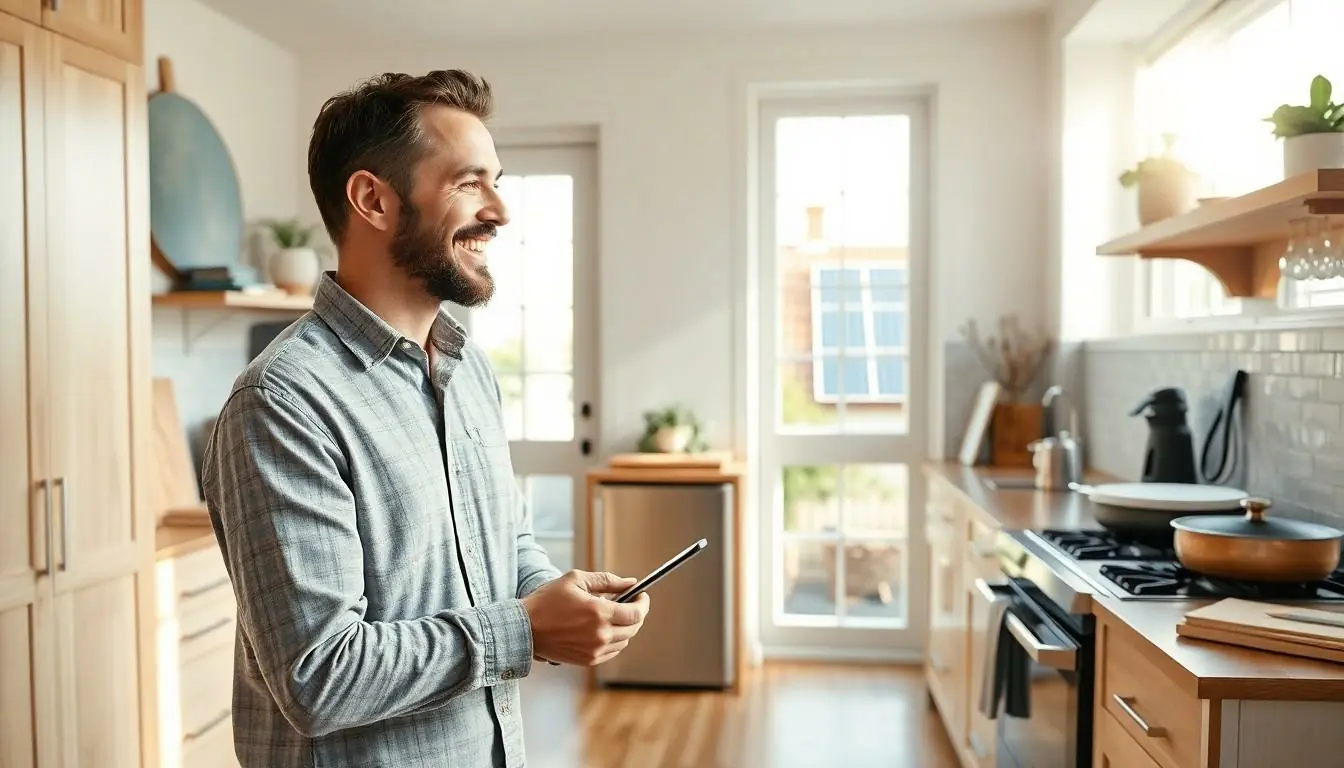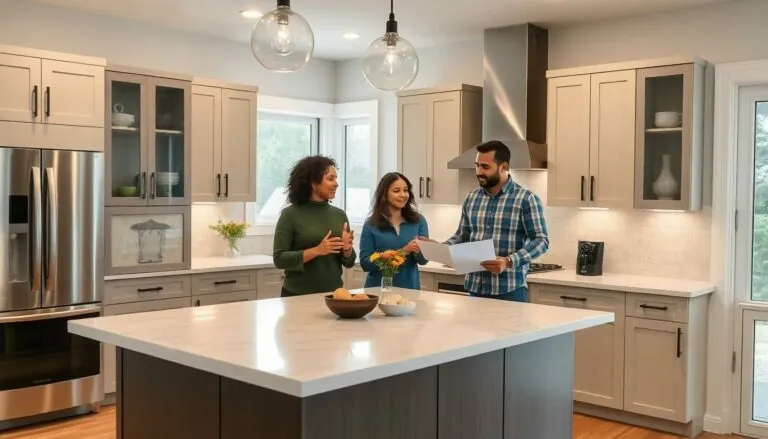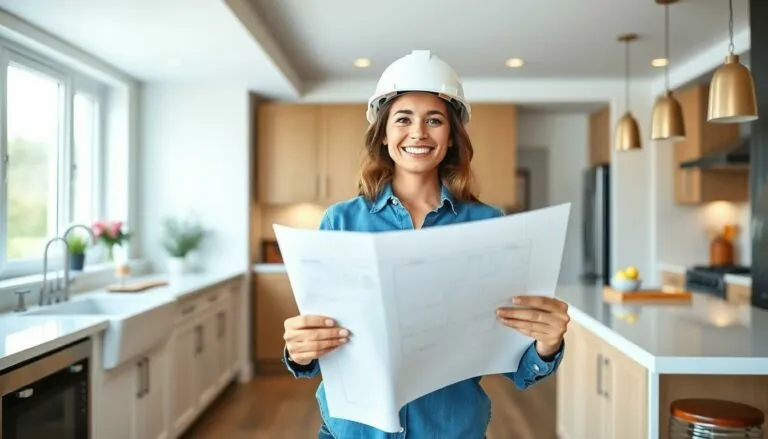Table of Contents
ToggleIn a world where saving the planet often feels like a Herculean task, eco-friendly home renovations offer a refreshing twist: you can go green without sacrificing style or comfort. Imagine transforming your home into an energy-efficient sanctuary while giving Mother Nature a high-five. It’s like getting a spa day for your house and a chance to save a few bucks on those pesky utility bills.
What Are Eco Friendly Home Renovations?
Eco-friendly home renovations involve making improvements to a house with a focus on sustainability and environmental responsibility. These renovations often utilize materials that minimize ecological impact while enhancing energy efficiency. Homeowners aim to create healthier living spaces, reduce waste, and lower energy costs.
Sustainable materials play a crucial role in these renovations. Recycled or reclaimed wood, bamboo flooring, and low-VOC paints contribute to eco-friendly projects. Selecting energy-efficient appliances, such as Energy Star rated models, significantly reduces electricity consumption and promotes sustainability.
Incorporating renewable energy sources also transforms a home into an eco-friendly haven. Solar panels can provide a clean energy supply, decreasing reliance on non-renewable sources. Homeowners gain financial benefits through energy savings and tax incentives.
Water conservation techniques enhance an eco-friendly renovation. Installing low-flow fixtures, rainwater harvesting systems, and drought-resistant landscaping minimizes water use. These measures support environmental efforts and lower utility bills.
Efforts toward energy efficiency yield notable advantages. Proper insulation and energy-efficient windows not only keep homes comfortable but also significantly lower heating and cooling costs. Smart home technology allows for further optimization, enabling homeowners to monitor energy usage and adjust settings remotely.
Overall, eco-friendly home renovations represent an integration of design and sustainability. Adopting these practices fosters a healthier environment, both within homes and in the larger community. Investing in such renovations reflects a commitment to reducing one’s carbon footprint while enhancing comfort and style.
Benefits of Eco Friendly Home Renovations

Eco-friendly home renovations significantly improve sustainability while enhancing comfort. Homeowners enjoy a variety of advantages that stem from prioritizing environmental responsibility.
Environmental Impact
Eco-friendly renovations reduce ecological footprints through careful material selection. Using sustainable products like bamboo flooring and recycled wood minimizes habitat destruction. He or she can also implement energy-efficient appliances to cut down on electricity consumption. Installing solar panels contributes to renewable energy production, lessening reliance on fossil fuels. Incorporating water-saving features like low-flow fixtures helps conserve vital resources. Each choice made during the renovation process actively supports a healthier planet and fosters biodiversity.
Financial Savings
Financial savings from eco-friendly renovations stem from reduced utility expenses. Homeowners save significantly on energy bills with energy-efficient appliances and improved insulation. Low-flow fixtures lower water costs, leading to substantial savings over time. Tax incentives and rebates often accompany renewable energy installations, providing additional financial benefits. Smart home technology can further optimize energy usage, allowing for precise monitoring. Over time, these upgrades not only pay for themselves but also add value to the property.
Sustainable Materials for Renovations
Sustainable materials play a crucial role in eco-friendly home renovations. Homeowners prioritize these materials to enhance energy efficiency and support environmental responsibility.
Recycled and Upcycled Materials
Recycled materials often include reclaimed wood, glass, and metal, which reduce waste and save resources. Upcycled products transform old items into new features, like using antique doors as decor or furniture. Homeowners appreciate the unique character these materials bring. Utilizing salvaged bricks or tiles not only conserves resources but also adds a distinctive aesthetic. Healthier living spaces grow from choosing recycled options, promoting both sustainability and style.
Natural and Non-Toxic Options
Natural materials such as bamboo, cork, and stone represent excellent choices for eco-friendly renovations. These materials contain fewer harmful chemicals compared to conventional options. Appropriately sourced, bamboo grows rapidly and offers durability. Low-VOC paints and finishes minimize indoor air pollution, creating a healthier environment. Incorporating non-toxic insulation made from recycled cotton or wool enhances energy efficiency. Ultimately, choosing natural and non-toxic options supports sustainability while providing comfort and aesthetic appeal.
Energy Efficiency in Renovations
Energy efficiency plays a crucial role in eco-friendly home renovations. Homeowners focus on improvements that lower energy consumption and enhance comfort without sacrificing style.
Insulation Improvements
Upgrading insulation enhances energy efficiency by preventing heat loss in winter and heat gain in summer. High-quality materials like spray foam or cellulose significantly improve thermal performance. Proper insulation creates a comfortable living environment, reducing reliance on heating and cooling systems. Energy-efficient windows also contribute to maintaining indoor temperatures, further decreasing costs. Insulating doors and attics prevents drafts, ensuring homes remain cozy year-round. Utilizing these improvements leads to lower energy bills and contributes to a healthier planet by decreasing fossil fuel reliance.
Renewable Energy Solutions
Integrating renewable energy solutions transforms homes into sustainable spaces. Solar panels are one of the most effective ways to harness clean energy, providing significant savings on utility costs. Installing these systems allows homeowners to generate their own electricity, often leading to energy self-sufficiency. Incentives such as tax credits and rebates incentivize the adoption of these systems, enhancing financial benefits. Wind turbines also offer an alternative for homeowners in suitable locations. By making use of renewable sources, homeowners not only reduce their carbon footprints but also invest in long-term energy savings.
Embracing eco-friendly home renovations transforms not just living spaces but also lifestyles. By prioritizing sustainability and energy efficiency, homeowners can enjoy a stylish and comfortable environment while making a positive impact on the planet.
These renovations offer numerous advantages including reduced utility costs and improved indoor air quality. With the right choices in materials and technologies, it’s possible to create a home that reflects a commitment to environmental responsibility.
Investing in eco-friendly solutions not only enhances property value but also fosters a healthier living space for generations to come. Making these thoughtful upgrades is a step toward a more sustainable future.






